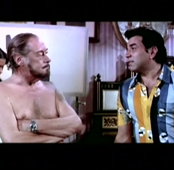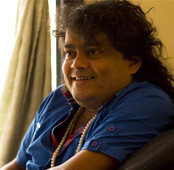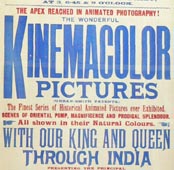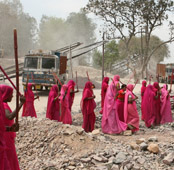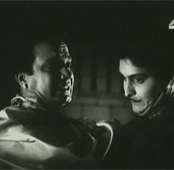THE NEW MONEY
On September 12, as the Toronto International Film Festival (TIFF) was
going on, a headline on the page of a new crowd-funding site called
Wishberry.com read: “Mumbai Cha Raja Conquers The World”. Manjeet
Singh’s Mumbai Cha Raja, an intimate film which revolves around the
lives and friendship between two Mumbai street kids, had been selected
for TIFF but Singh needed money to put finishing touches to the film. He
put out a simple message on the crowd-funding site.
“Ours is the only film in the City to City section at TIFF without a known
name involved. To make a mark at TIFF we need your support urgently…
The money that you contribute will be used to complete the films post-
production and promotional activities.”
On September 12 the film had already raised Rs 3,39,500 from 28
contributors. Singh’s target was Rs 15 lakh, the highest target for an indie
film on Wishberry yet.
Wishberry.com, one of the country’s most prominent crowd-funding sites,
is managed by a core team of three entrepreneurs in their twenties –
Priyanka Agarwal, 27, Anshulika Dubey, 26, and Samiksha Mehta, 21 –
based out of Mumbai. It allows social or creative projects to raise money
from contributors from India and abroad. The site went live in January
2012. They invited indie filmmakers to use it this April.
Contributors don’t get their money back but are promised tokens of
gratitude such as T-shirts, special passes to events or simply a thank you
note. Indie filmmakers promise contributors anything ranging from a
mention on their film’s website to a co-producer credit to an opportunity
to appear in the movie being made.
Singh’s is one of 10 indie film fund raising campaigns that have been on
Wishberry.com so far. 4 of these have actually raised up to 80% of the
money they set out to raise and closed their campaigns. The others are
still on. In all, Wishberry has hosted 12 campaigns for creative projects
and 1000 for social projects. The minimum contribution is decided by the
filmmaker but it could be as low as Rs 1, (which is what The One Rupee
Film, a Bengali docu-fiction on no-budget independent filmmaking in
India, asks for). In return, Wishberry takes 10 to 12 percent, depending
on the nature of the project, of the money raised. Also, they offer
(optional) marketing and strategic advice to filmmakers which could cost
them between Rs 2000 to Rs 5000.
Crowdfunding for films began to be taken seriously in March this year
when filmmaker Onir’s I Am, an ensemble of four films exploring sensitive
themes like child abuse and homosexual relationships, which was partly crowd-funded through Facebook and Twitter, won the National Award for Best Hindi Film and Best Lyrics. Also, when Vasan Bala’s Peddlers, crowd funded through Facebook, was accepted at the Cannes. Besides raising funds, crowd-funding is a means for filmmakers, both famous and unknown, to publicize their films before release. “An established filmmaker like Anurag Kashyap could easily raise Rs 5 lakh for his film through Wishberry,” says Wishberry Vice President Anshulika Dubey. “1000 people would easily pay Rs 500 each, and news of the film would spread as well.” In fact, the first film fund-raising campaign on Wishberry was for Chauranga, directed by Bikas Mishra but produced by Onir and actor Sanjay Suri – both relatively known names. But some indie filmmakers are averse to this trend. Bhubaneshwar based filmmaker Surya Shankar Dash, for instance, pointed out to The Hindu: “If tomorrow, Shah Rukh Khan says, ‘I will make a film with your one rupee’, lakhs will pour in. Who will then support the indie guy who actually needs the one rupee?”
Dubey tells us that a lot of funding for the Indian indie on Wishberry is
coming from NRIs. “Perhaps because even a contribution of Rs 500 is only
$10 for a contributor, say in the USA, so there are larger, even if fewer,
contributions coming in from abroad,” she explains. She categorizes
contributors into: “people who know the director directly; those who
know ‘of’ the director; those who simply like the concept.” She says
most of the contributions for the Indian independent films are coming
in from “the friends and family of the filmmaker” or “friends of the
filmmaker’s friends and family”. As for those who simply like the idea and
fund it, Dubey feels these contributors are “random” and “you can’t bank
on them much”.
While Mumbai Cha Raja has set itself the highest fund-raising target for
an indie film on Wishberry, Greater Elephant by Srinivas Sunderrajan is
the independent film that has actually raised the most money on the site:
Rs 5,26,000. The movie, Sunderrajan’s second film, is a dramedy about
a mahout who has lost his elephant in a city, and the colorful array of
characters who join him in looking for it. Sunderrajan plans to use this
money just to “release the film”. It has already been made with Rs 23
lakh. Humara Movie, a Mumbai based company which creates short indie
films and distributes them on its website is co-producer on the film with
Sunderrajan’s company Enter Guerrilla. Greater Elephant is the first full-
length feature Humara Movie has produced, and it intends to produce
another one soon. It was begun last year by Marketing Consultant Vinay
Mishra, Corporate Lawyer Pallavi Rohatgi and Preety Ali, a producer
involved in films ranging from Black Friday to Namaste London, who co-founded
PI films with her husband, filmmaker Imtiaz Ali.
Mishra and Rohatgi met Sunderrajan through a common friend. “We
approached Srinivas to work on a short film for us,” says Rohatgi. “He said he had a script for a feature film instead – which we read and really liked.” They finally decided to finance Greater Elephant after they saw Sunderrajan’s first film The Untitled Kartik Krishnan Project.
Sunderrajan, 28, financed his first film out of his savings. The film was
shot over thirty days, but because he had to work around whenever his
actors and crew (they were working for free and held other jobs) had time
to shoot on their holidays, it stretched to a year. They shot it digitally,
often on location: by bribing the waiters at a bar so they could shoot
there for a few hours before it opened, or on the streets of Mumbai,
without permission from the authorities. Sunderrajan didn’t have money
to create sets. When an old house he was shooting in collapsed, he just
re-wrote the script.
The film, a meta-fiction, has as one of its primary characters an indie
filmmaker named Srinivas Sunderrajan who asks another aspiring
filmmaker to fork out money so he can bribe a municipal officer whom he
refers to only as “the system”. “That’s what indie filmmaking is all about,”
says Sunderrajan. “The indie spirit.” Made for Rs 45,000, The Untitled
Kartik Krishnan Project was advertised as India’s first mumble core
(a genre defined amongst other things, by a really low budget) film.
Anurag Kashyap had promoted it as a “one thousand dollar film”.
Ironically, Sunderrajan had to pay much more to actually release this
film. Here’s the break-up: Rs 15000 for the virtual print fee paid to
Scrabble Entertainment Pvt. Ltd., the digital systems supplier who actually
showed the film; Rs 8000 for print banners and standees to be put up around
the theatre; Rs 32000 for cess fee to the Central Board of Film Certification
and the renting of a theatre to show the film to those who would
certify it. This totals up to Rs 55,000 in all. This was despite him having
taken on Real Image Media Technologies Pvt. Ltd. as “digital partner” to
digitize the film so it could be exhibited. Else this would have cost him
another Rs 30,000. Also, this is despite the fact that PVR, his exhibitor,
didn’t charge him anything. The film was shown as part of an ongoing
initiative to promote indie cinema.
At The Bagel Shop, a cafe in Bandra, Mumbai, Sunderrajan laughs at the irony
of his having to pay more to release The Untitled Kartik Krishnan Project
than to make it. He has a neat goatee. He is dressed simply in a T-shirt
and a pair of knee-length shorts. His only accessory is a pointed umbrella
that he seems to carry around with a sense of purpose, interrupted every
now and then with an impish smile. Sunderrajan is resonant with the
indie spirit that he speaks of; part of a group of ambitious, young and
middle-class independents pushing to get their films made and shown—tapping into every resource available to them and juggling other jobs.
For a large number of them film finance, like charity, begins at home.
Many of the new indie films, including those that are crowdfunded, have
been financed by filmmakers’ friends and family, or by the filmmakers themselves.
Karan Gour, for instance, who made the award winning Kshay began
working on his film when he got Rs 1 and a half lakh from his father
in 2007. “He wanted to buy me a car,” says Gour about his
father. “Instead I asked him to give me money to begin work on my film.”
Then he managed to raise close to another 6 lakh in bits and pieces- all
from friends and family, some of who contributed as little as Rs 1000. He
began shooting in 2008. Shooting stalled whenever funds dried up, then
resumed when money came in. Kshay was finally completed in 2010. “The
film would actually have taken Rs 20 lakh to make,” says Gour. “But
many people worked for free, or on an understanding that they would be
paid later if the film made any money. We got a lot of the equipment in
the same way.”
The new breed of indie filmmakers might not be wealthy or from
filmmaking families, but they have to be extremely resourceful.
And Bedabrata Pain, 49, is resourceful. A NASA Scientist, he has produced,
written and directed his film Chittagong– on the historic Chittagong
armory raid of 1930. Chittagong was supposed to be produced with
money from American investors, which didn’t happen because the
the 2008 recession did. Pain finally financed it himself from money he
received out of patents on his inventions. He completed the film in 2010,
but its release was stalled because Ashutosh Gowariker’s Khelein Hum
Jee Jaan Sey, a blockbuster starring Abhishek Bachchan on the same
theme, was released when it should have been. Then came controversy,
typed out on a Facebook post by Anurag Kashyap. He claimed that
distributors “decided to sit on it (Pain’s film) because of a phone call from
someone, because that someone was trying desperately to save his son’s
career… “.
Pain had refrained from commenting on this controversy when it had
occurred and he refuses to do so now, except to say that it’s been made
on “1/10th the budget of Khelein Hum… ” The Chittagong that he had
called his “12 year old son” when it was due to release in 2010—because
that’s how long it took to work that seed of an idea into a film—has
turned 14 now. He is looking forward to its release in October 2012.
“Today’s independent cinema cannot be esoteric,” he says. “It has to
talk to an India of new sensibilities.” He believes India’s “300
million strong middle class” can provide a “sizable mature audience”
to independent cinema and yet let it remain “true to its spirit”. He has
a grin that brims over with optimism that belies his years of
struggle.
If those who are financing Singh and Sunderrajan’s small budget films
make up one kind of new investor in the Indian Indie, there are those
that make up the other. Bollywood biggies like Sunil Bohra, Vikram
Malhotra, Vikas Bahl and, surprisingly, Ekta Kapoor are the names that
top this second list.
Take Bohra, of Bohra Brothers, whose twitter handle and website
identifies him as ‘Sunil The Bohra’. Founded in 1947, the first Bohra
Brothers production was a romance and a family drama called Lachak,
released in 1951, with yesteryears stars Amarnath and Geeta Bali. The
films that made the Bohra Brothers a name in the 1990s include Saajan
Ka Ghar, starring Rishi Kapoor and Juhi Chawla, Mard, starring Mithun
Chakraborty, and Takkar, starring Suniel Shetty. Between them these
movies encompass the length and breadth of 1990s Bollywood formula.
Today, Bohra has co-produced Anand Rai’s Tanu Weds Manu, Ram Gopal
Varma’s Not A Love Story, Tigmanshu Dhulia’s Saheb, Biwi Aur
Gangster and Kashyap’s GOW.
Of these Tanu Weds Manu is a low budget version of a standard
Bollywood romance and Not A Love Story, another one of Varma’s failed
experiments. But both Sahib, Biwi… and GOW are amongst oft-cited
examples of the triumph of a new kind of Hindi cinema.
Tracking the co-producers of some of these films is like finding your way
through a maze. Malhotra, COO of Viacom 18, produced Sujoy Ghosh’s
Kahaani, Luv Ranjan’s Pyaar Ka Punchnama, Kashyap’s GOW and Bombay
Velvet, Sachin Kundalkar’s Aiyyaa and Supavitra Babul’s Bittoo Boss. Both
Bohra Brothers and Viacom 18 produced Bejoy Nambiar’s Shaitan and
Kashyap’s GOW. Bahl, as creative head of UTV Spotboy, has produced Raj
Kumar Gupta’s Aamir and No One Killed Jessica, Kashyap’s DevD, Shyam
Benegal’s Welcome To Sajjanpur and Vikramaditya Motwane’s Udaan.
Udaan, Shaitan and GOW were also produced by Anurag Kashyap Films
Pvt Ltd (AKFPL). Then Bahl left UTV Spotboy and began Phantom Films–
which is co-producing Kashyap’s Bombay Velvet.
Alok Thakur, who works at Sunil Bohra’s office says AKFPL, Bohra
Brothers and Phantom Films are like “one big family”. The co-producers
have transformed cinema into a neatly functioning hedge fund. They
invest in many small budget productions, mostly each others, instead
of packing their eggs in one basket. And if any of these (like a Kahaani
which, made for Rs 15 crores, entered the ‘hundred crore club’—meant to classify box office grossers which pass that figure) becomes a sleeper hit, they more than cover their losses.
Yet, while some of these new producers can be seen as consciously
seeking to make a different kind of cinema, others seem to be merely
investing in films because they are relatively ‘low budget’, but marketing them as alternative cinema. A name that might fall into this category is Ekta Kapoor, whose Balaji Telefilms Ltd., alongside endless family soaps and vulgar sex comedies like Kya Supercool Hai Hum, has produced Dibakar Banerjee’s Love, Sex Aur Dhokha, Shor In The City by Raj Nidimoru and Krishna D K, and Milan Luthria’s The Dirty Picture. Balaji Telefilms Ltd. categorizes these films in an interesting way. In 2001 it began a subsidiary called Balaji Motion Pictures which produced Bollywood turkeys like Kyo Ki… Main Jhuth Nahin Bolta and hits like Kyaa Kool Hai Hum. Then, in March 2010, they released Banerjee’s Love, Sex Aur Dhokha (LSD) under a new edgy looking banner: Alt (presumably short for ‘alternative’) Entertainment. A source from within Balaji Telefilms Ltd. says that they actually spent more on marketing LSD, than in making it because they “wanted to make the multiplex audience aware that a film like LSD exists”.
The same banner also produced the star studded Once Upon A Time In
Mumbai. Shor In The City was co-produced by Alt Entertainment as well
as Balaji Motion Pictures. As was Dirty Picture. Now, Kya Supercool Hai
Hum has been produced under the Alt Entertainment banner too. Balaji
Motion Pictures CEO Tanuj Garg explains this by saying: “We have a
portfolio approach, which implies a mixed bag of films.” On their process
of selecting scripts, Garg says: “Ekta supported by our creative team
takes narrations and/or reads submissions.” He says a good idea or script
is always the starting point but that the company only backs content that
is “cutting edge” as well as “commercial” and “entertaining”. The source
from within Balaji Telefilms Ltd. makes it clear that the company “isn’t
looking for festival films which are hard to market – which we would find
difficult to release in India”.
Balaji Telefilms Alt Entertainment, like a UTV Spotboy, takes
after ‘independent divisions’ set up by major studios in the US, like Fox
Searchlight, Paramount Vantage or the short lived Warner Independent
Pictures. UTV Spotboy is producing Luv Shuv Tey Chicken Khurana with
AKFPL. Another co-production. Since the departure of Vikas Bahl it
has been headed by Siddharth Roy Kapur, who also heads UTV Motion
Pictures. Another clear indication that ‘alternative’ is no longer ‘parallel’ to
the mainstream.
In some cases, the low budget movie provides the same sort of guarantee
a cheap share does in the stock-market. If nothing else, then a good
sound-track can ensure money is recovered.
This barrage of big investors in the off-beat, comprising old film families,
new turks and multinational corporations received a huge fillip in 2010,
when investing in big budget productions had turned risky for the
financier. Big budget productions like Guzaarish and Kites registered
losses. Smaller films like Ishqiya and Tere Bin Laden were seen to work.
Yet for all the praise heaped on this brigade for having transformed
India’s cinemascape there is a lot of waiting and watching. They hedge
their bets, avoiding taking a risk on a truly independent film that has
great potential. What still seems to be missing is a producer who has the
creative intuition of knowing which film to back, and how to back it.
“We need that producer who, when asked for (Rs) 3 crores for a film,
recognizes it’s potential and gives you (Rs) 5 crores,” says Bedabrata
Pain. “People here feel that because a film is ‘independent’ it is made in
the spirit of: Kisi bhi tareekein se film bana deten hain (Let’s make a
film, however we do it)”. Pain feels this compromises the quality of the
films made, “which is sad, because we’re great storytellers otherwise”.
Pain is still waiting for Chittagong to release and is planning a 250 screen
launch for it, and more. He hopes for a big US release for his film too. He
wishes production houses like “Viacom18 and UTV had that vision too”.
Keeping Up With The Indie Joneses
ArticleSeptember 2012
 By Rishi Majumder
By Rishi Majumder
Rishi Majumder is Senior Editor at The Big Indian Picture.


